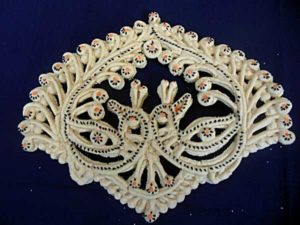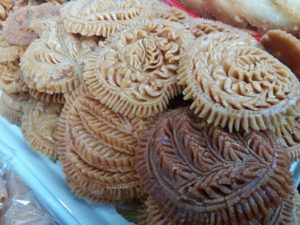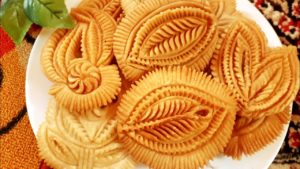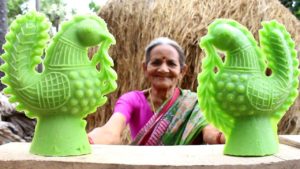Five Indian sweets that are nothing short of a piece of art
Indian desserts, especially traditional sweets, are any sweet tooth foodie’s dream come true. The sweet taste is not the only part of the food or sweet one cherishes; it is also the way an edible looks. In fact, many sweets in India have also been recognised for their artistic appearances and people train for years in order to achieve the set parameter of how these sweets should look!
Being a land of numerous diverse cultures, India is also home to many different kinds of cuisines. Apart from traditional food items, desserts have been a speciality of Indian cuisines. As with several main course dishes, making desserts is also an art. The presentation and looks of the sweets are often as important as the taste and getting all three right is a challenge of its own many a time.
Most of these delicacies are on the sweeter side and over the years have become an integral part of festive cuisine in India. Be it for festive gatherings, wedding gifts or any other special occasion, these desserts have continued to hold the threads of culture, art and society, in a truly delicious knot.
Here is a list of five traditional Indian sweets that have an artistic touch.
Panchadara Chilakalu or Kodma Batasha
Panchadara Chilakalu is a traditional Telugu sweet. In Telugu, Panchadara means sugar and Chilakalu means parrot. Hence the traditional sweet, which is in demand during Makar Sankranti, a harvest festival celebrated in the month of January, is shaped like a parrot usually.
Made by pouring thick sugar syrup in parrot shaped wooden moulds, this sweet is also very popular in West Bengal. On the eve of Poila Baishakh (Bengali New Year), one can see the local grocery stores selling heaps of sugary candies shaped like swans, parrots, hens, horses, temples and many more, in pinks, whites and yellows. They call this traditional sugar candy, Kodma Batasha.
Made of sugar, jaggery and sometimes with powdered roasted nuts, it is very popular with children across India.
Goyna or Gohona Bori

Rabindranath Tagore wrote a letter seeking permission to preserve Goyna’s photographs at the Art Building of Shantiniketan (Photo: picuri.com)
Made of lentil or dal mixed with poppy seeds, this dry dumpling is known for its ornamental shapes that come in a bouquet of variety. The name itself, goyna or gohona means jewels or ornaments in Bengali. Originated in rural parts of Purba Medinipur, the southernmost district of West Bengal, these beautiful dumplings are steeped in history and art.
One of the most interesting stories associated with this ornate version of bori is its connection to Nobel laureate poet Rabindra Nath Tagore. In 1930, a student of Shantiniketan, the university founded by Tagore, Seba Maiti presented Tagore gohona bori freshly made by his mother Hirnmayi Debi. Taken aback by the artistic brilliance of the sweet, he wrote a letter seeking permission to preserve their photographs at the Art Building of Shantiniketan. Tagore also went on to say that Gohona Bori was ‘worthy of being called art and that baking it or eating it might be an act of disintegration’!
Nakshi Pitha

Nakshi Pitha mimics floral motifs that are abound in artistic expressions like alpana (floral motifs) or embroidered quilts also known as kantha (Photo: worldfood.com)
An intricately carved rice cake, this traditional dessert originated in the rural parts of undivided Bengal and mimics floral motifs that abound in artistic expressions like alpana (floral motifs) or embroidered quilts also known as kantha. The name ‘nakshi’ comes from nakshi kantha, a rural art form of embroidering fabric used both for wearables as well as decor.
This delicacy is made from a dough of rice flour that is rolled out and strenuously carved into designs of creepers, flowers and plants, using needles, hairpins, date thorns or twigs. One can either deep fry the rice cakes and dip in sugar syrup or can even let them dry and store for later use. From weddings and harvest festivals to Bengali New Year celebrations, Nakshi Pitha is a constant culinary reminder of Bengal’s artistic past that was once heavily dominated by women’s folk art.
Suryakala and Chandrakala

Suryakala is in circular shape like sun, while Chandrakala is in the shape of a crescent moon (Photo: butteredveg.com)
Originated in Bihar, Suryakala and Chandrakala sweets have now become synonymous with Diwali and Holi festivals across India. As the name suggests, Suryakala is in a circular shape like sun, while Chandrakala is in the shape of a crescent moon.
These are made from flour dough with a stuffing of coconut mixed with dry fruits, khoya (milk boiled until solidification), semolina, cardamom and sugar. Much like Nakshi Pitha, the stuffed dumplings are deep-fried until golden and then let to rest and expand in a vessel full of sugar syrup.
Jangiri or Imarti
Jangiri is a sugar-coated funnel-like traditional sweet. It has alternative names including Imarti, Amriti and Omriti. This difference in the names is due to its existence in different regions of India. This sugary, fried delight originated in the northern part of India during the Mughal era. However, the name Jangiri or Jangri was given by people in Kerala. Jangiri is often confused with Jalebi because both look alike.
Made by deep-frying in clarified butter or oil, this sweet is made from a thick batter of black gram flour that is piped into thin circular flower-like motifs through a muslin cloth pouch. Once fried it is then dipped in sugar syrup and left to expand. Watching a Jangiri maker frying Jangiris itself is a joy. In comparison to Jalebi, Imarti not only wins extra points for sweetness but is also known for its complicated geometric patterns that display its maker’s artistic prowess.












